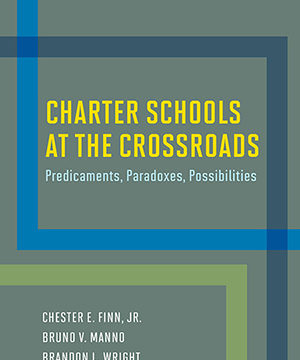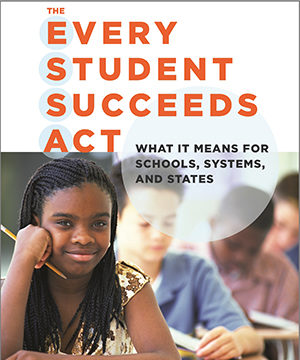 Columbine
Columbine
By Dave Cullen
Twelve Hachette Book Group, 2009, $26.99; 417 pages.
This book is clearly the last word on Columbine. The author has reported on the Columbine high-school massacre in various magazines and newspapers since 1999; he has interviewed, it appears, everyone interviewable; he has studied all the many official reports and all the evidence, listed here in a bibliography of 14 pages; and one can only regret the form in which he has chosen to cast his account. There have been many such shootings over the years, and one, the Virginia Tech massacre, far exceeded in numbers those killed at Columbine High in Colorado on April 20, 1999, but Columbine—it is no longer necessary to define for American audiences what it was—had some distinctive features that helped impress it into the American mind as the epitome of school killings.
There were two killers, rather than one, suggesting a degree of collaboration or conspiracy that made Columbine different from the typical school shooting by one disturbed or deranged perpetrator. It was the first school killing covered live on continuous news television, which contributed to both widespread knowledge and widespread confusion as to what drove the killers. The two young students had also left an enormous trail of video recordings, web pages, notebooks, and all kinds of other evidence of acquisition of guns and bomb-making materials, which could be, and were, used to determine how the plot developed, why they did it, what they had in mind.
Perhaps of greatest interest to school administrators and teachers, the two left a substantial trail of recorded misdemeanors, crimes, and treatment for them that raised the question, How could their preparations, undertaken over months, for the killing of hundreds—fortunately, partly foiled by the failure of the two huge bombs they set up to explode in the lunchroom—not have received notice in time for someone to stop them?
Cullen tells the story of the massacre twice, both times weaving in stories about students, victims, teachers and administrators, parents, and investigators, about whom we learn more than we need to know, in the style of The New Yorker. The first telling has the virtue of communicating the confusion attendant as the events occurred. Hundreds of police officers surrounded the school and prepared to invade it; the TV news stations were on the spot almost immediately (“breaking news,” after all); terrified students were calling parents, 911, and news channels on their cell phones; and many things heard contradicted other things. All this is well documented by Cullen.
But early on, when information about the intended targets and even the number of killers was unclear (as they appeared and reappeared in different locations and shed the trench coats they had worn for their initial shootings), there emerged a widely accepted story line: Two marginalized students had been subjected to sneers and social rejection and in revenge were shooting athletes and Christians. Actually, the killers were not marginalized, were good and even popular students, were not members of the Gothic “trench coat mafia,” and were killing at random. All initial views of their motivation were misguided.
The second telling of the massacre, incorporating all we have learned since, concentrates on the development of the two killers and their ideas and plans, and on their encounters with the law and school authorities. One was clearly a psychopath, and Cullen has a good and extensive discussion of what we know of this disease and how to treat it. The second was dominated by the first and suffered from an extreme version of lovesickness directed at a student whom he never addressed. The first killer, influenced apparently by admiration for Germans, from Nietzsche to the Nazis, thought that the world and all its people were terrible and deserved to die, and he was ready to die with them. He was able to persuade the second killer, who was miserable, but just why is unclear. Both boys killed themselves when they ran out of available targets and weapons.
Despite the general confusion during the massacre and for some time later, the identity of the two shooters became available almost immediately, presumably from reports by students streaming out of the school and being rapidly interviewed by police. “A simple search on Jeffco [Jefferson County] computer files found something stunning. The shooters were already in the system. Eric [Harris] and Dylan [Klebold] had been arrested junior year. They got caught breaking into a van to steal electronic equipment. They entered a 12-month juvenile treatment program, performing community service and attending counseling. They’d completed the program with glowing reviews exactly 10 weeks before the massacre.
“More disturbing was a complaint filed thirteen months earlier by Randy and Judy Brown, the parents of the shooters’ friend Brooks. Eric had made death threats against Brooks. Ten pages of murderous rants printed from his web site had been compiled. Someone in Battan’s [the lead investigator] department had known about this kid.”
We learn in the course of the book a good deal more about the available record. There was apparently no way for the counselors in the treatment program to unveil the murderous intent of their counselees, who put on a good show of remorse. The papers that called for a search as a result of the Brown complaint, a search that might have uncovered astonishing evidence of intended mayhem in Eric’s room had it been executed, were never acted upon, and the file on the case kept getting lost, owing one assumes to the embarrassment it would cause the Jeffco officials.
Consider also a paper written by Dylan Klebold shortly before the massacre: “His instructor, Judy Kelly, read it and shuddered. It was an astounding piece of writing for a seventeen-year-old, but she was deeply disturbed… Dylan’s protagonist was killing civilians, ruthlessly, and enjoying it. Kelly wrote a note at the bottom instructing Dylan to come to see her…. ‘You are an excellent writer and storyteller, but I have some problems with this one,’ she wrote.”
The teacher went further. She called Dylan’s parents and spoke with them. “They did not seem too worried.” Both sets of parents were middle-class and ran respectable households, and while they were held in some way responsible by public opinion, they hardly seem to deserve censure from this account. Judy Kelly went on to the school counselor, who spoke with Dylan and “downplayed it again…. Kelly had done the right thing: she’d contacted the three people most likely to have information on Dylan…. If the counselor or parents knew Dylan had been setting off pipe bombs and showing them around at Blackjack Pizza [where he worked], they could have connected fantasy with reality and NBK [the boys’ code name for the massacre] might have come to an end. They did not. Jeffco investigators had most of the pieces. Most of the adults close to the killers were in the dark.”
Lessons? “The FBI and the Secret Service each published reports in the first three years, guiding faculty to identify serious threats. The central recommendations contradicted prevailing post-Columbine behavior [which was “zero tolerance,” “every idle threat…treated like a cocked gun. That drove everyone crazy”]. They said identifying outcasts as threats is not healthy. It demonizes kids who are already struggling…. Oddballs are not the problem. They do not fit the profile. There is no profile….
“The FBI compiled a specific list of warning signs…. It was a daunting list…. Few teachers were going to master it. The FBI recommended that one person per school be trained intensely, for all faculty and administrators to turn to.”
Cullen gives references to these reports, which are clearly worth reading. But the main effect of his well-researched book is to leave one sober about any program that might prevent such horrible events from recurring in the future.
Nathan Glazer is professor emeritus of education and sociology at Harvard University.




